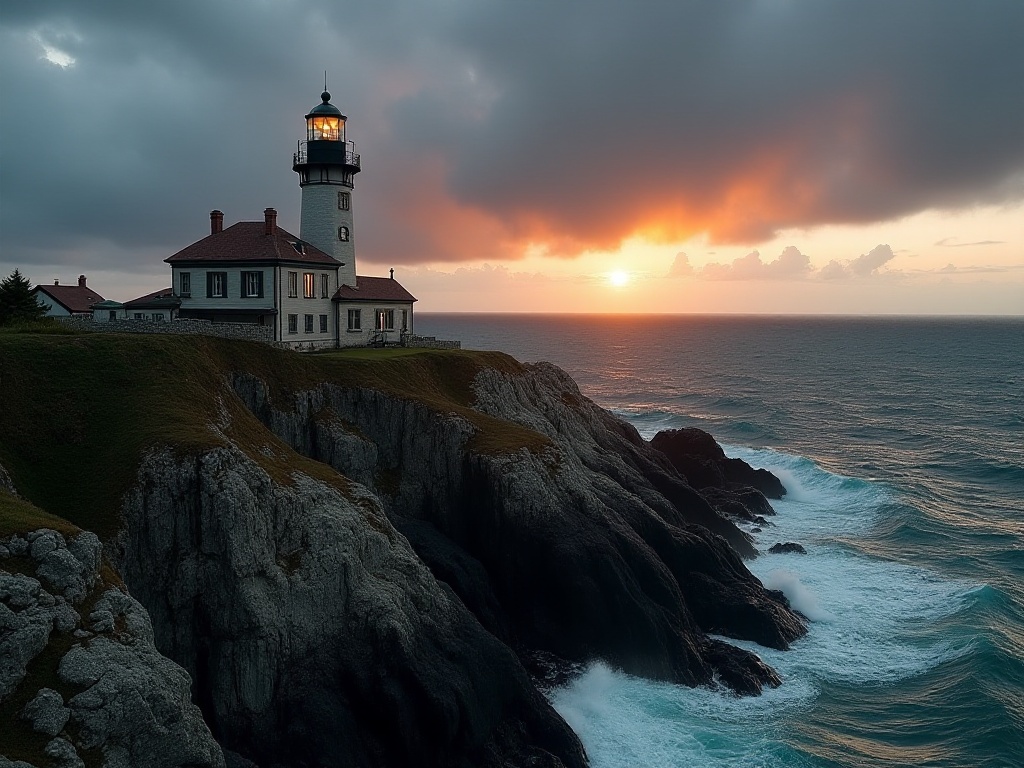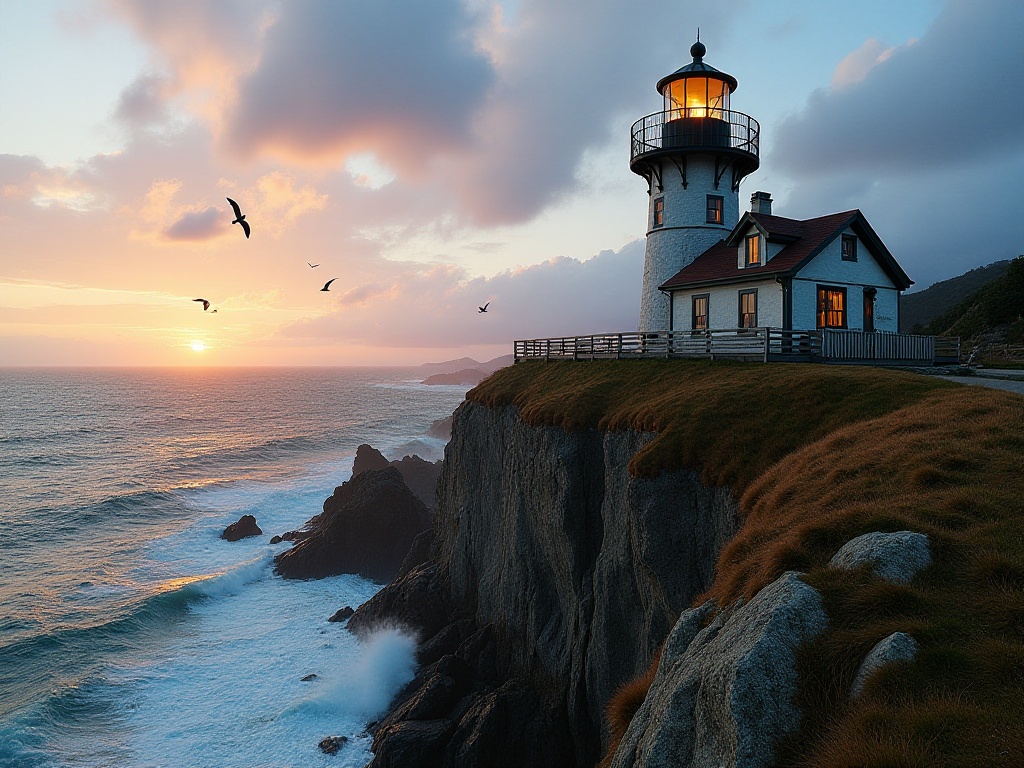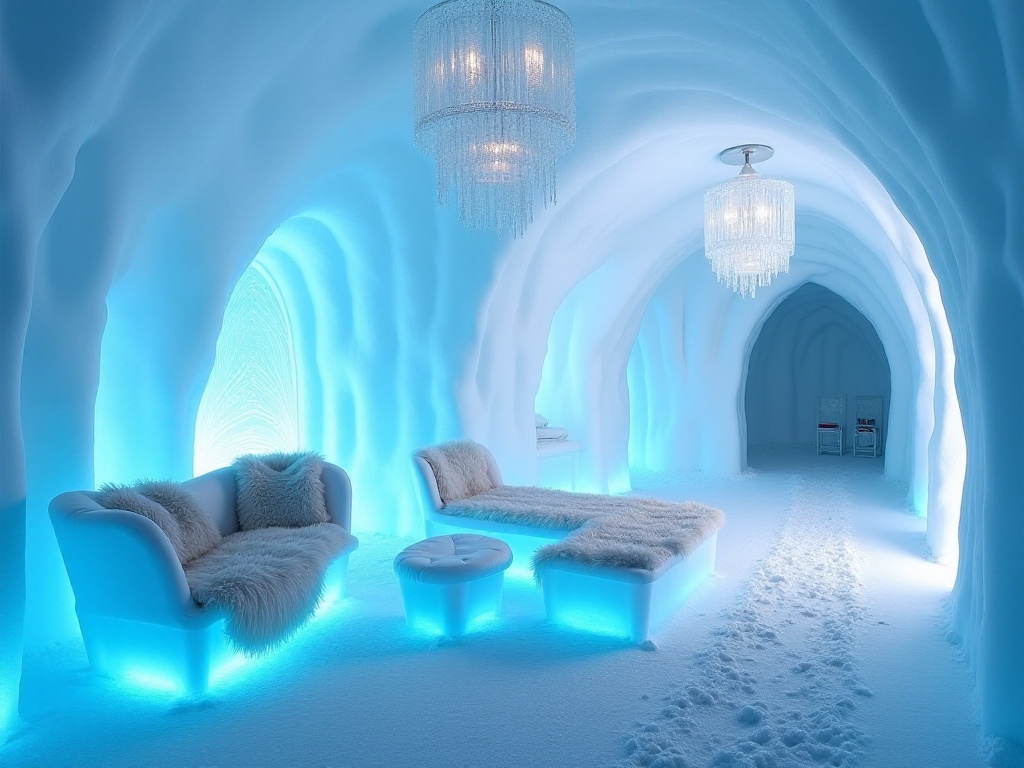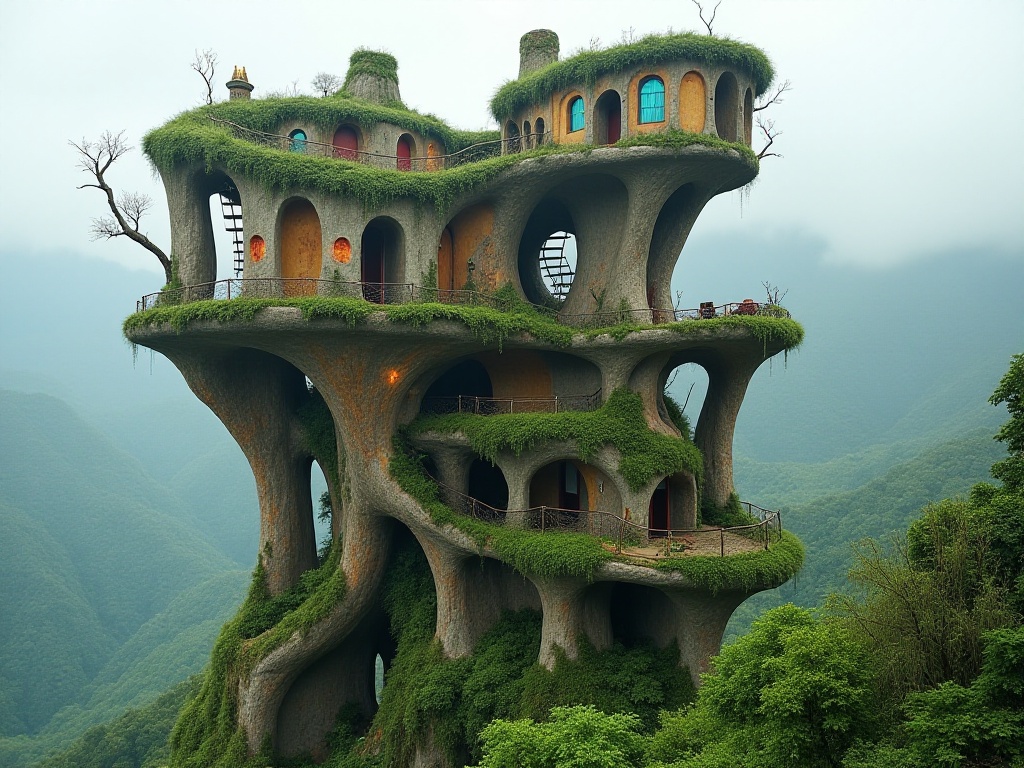Inspiration from Accommodations
Have you ever thought that a unique accommodation experience itself could become an important destination of travel? I remember how I felt when I first stayed in a traditional dome-shaped stone house (Trulli) in Puglia, Italy. Pushing open the heavy wooden door, I saw 800-year-old stone walls, with a round roof like a mushroom house from a fairy tale. At that moment, I suddenly realized that accommodation is not just a place to sleep - it can give us new perspectives and unique experiences.
I still remember the awe I felt standing at the doorway of that stone house. Puglia's sunlight filtered through gaps in the thick stone walls, creating dappled shadows on the ground. The temperature inside was much cooler than outside, and this ancient architectural wisdom amazed me. Locals told me that even in summer heat, these stone houses maintain a pleasant temperature inside, while in winter they retain heat well. I touched the rough stone walls, imagining the people who had lived here over hundreds of years, their joys and sorrows silently recorded by these stones.
At night, lying in bed, I looked at the stars through the small window, feeling like I was in another time and space. The next morning, I was awakened by birdsong outside my window. Opening it, I saw the Puglian countryside in the morning light - olive trees, vineyards, stone walls... It all made me feel incredibly peaceful and content. In that moment, I deeply understood that a special accommodation could truly change the nature and depth of travel.
Since then, I've consciously sought out unique accommodation experiences. Before each trip, I spend lots of time researching what special accommodations are available at my destination, their historical background, cultural significance, and relationship with the local environment. Sometimes, a special place to stay even becomes my main reason for choosing a particular destination.
Different Kinds of Homes
Over the years I've been to many places and tried various special accommodations. I remember once in Costa Rica, I stayed at an animal rescue center. I was awakened by sloth calls in the morning, could follow staff to feed injured animals during the day, and fell asleep to rainforest sounds at night. This wasn't just accommodation - it was like a classroom for life education.
It was a small rescue center on the edge of the rainforest, with only five guest rooms, and all income went to fund rescue work. My room was very simple - a bed, a wardrobe and a small balcony, but outside the window was dense rainforest and various birds and butterflies flying about. Every morning around five, I would be awakened by the distinctive calls of sloths, and after getting up, rescue center volunteers would take us to visit various injured animals in recovery.
I'll never forget the experience of feeding an injured jaguar cub. Its mother had been killed by poachers, and it was injured. Looking into its eyes full of wildness yet tinged with fear, I felt the harm human activities cause to wildlife, and understood the importance of this rescue center's work. In the evenings, we would sit around a campfire listening to the center's founder tell stories of his twenty-plus years rescuing wildlife - every story was moving.
During that week there, I not only learned a lot about rainforest ecosystems but also personally participated in wildlife protection work. When I left, I was no longer just a tourist but had become part of this small rescue center's mission. This experience went far beyond ordinary travel, making me think more deeply about the meaning of travel.
Another time, I experienced real farm life at a homestay in New Zealand. Getting up at 5am to milk sheep, helping repair fences in the morning, learning to ride horses and herd in the afternoon. The owners were a couple who had been running this farm for three generations - they not only taught me farming skills but also shared many stories about New Zealand's agricultural history and culture. At dinner, we enjoyed organic ingredients from the farm together, drank homemade wine, and shared our life experiences. That kind of genuine connection and exchange is something you can't experience at any five-star hotel.
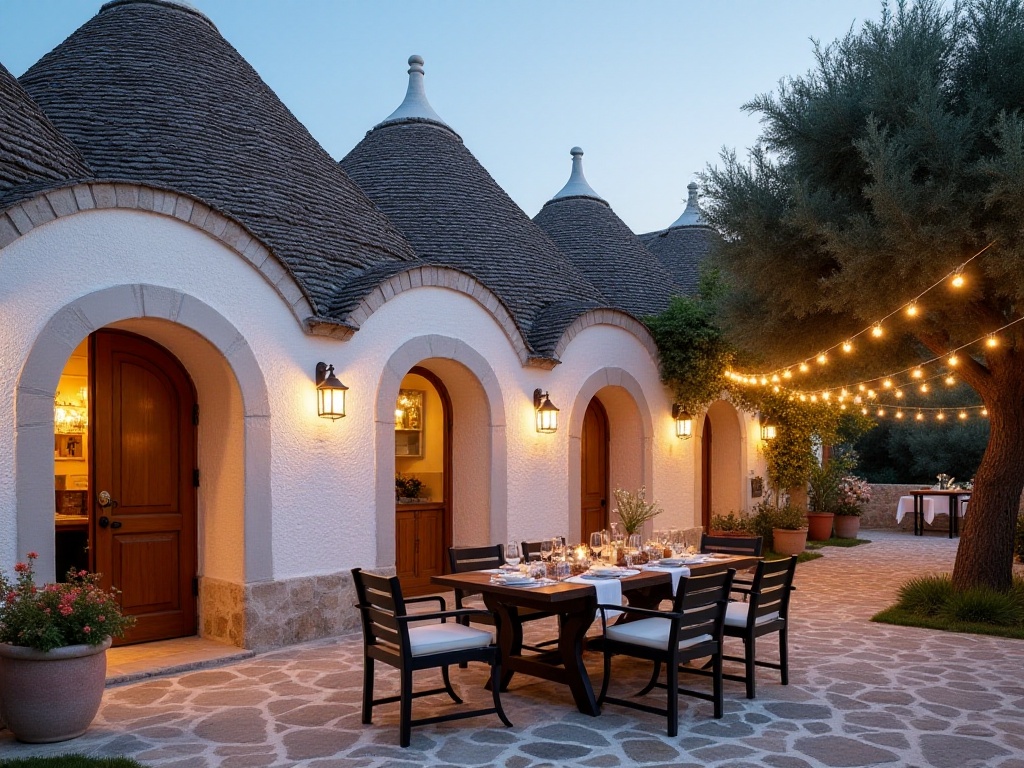
Cultural Immersion
My experience at a desert camp in Dubai gave me a new understanding of "luxury." The tent was furnished with Persian carpets and traditional tapestries, and at night I could see stars through the skylight while lying in bed. During the day we drove 4x4s over sand dunes, closely observed wild gazelles and antelopes, rode camels to watch the sunset, and learned to make Arabic coffee from Bedouins. This experience gave me deep insight into Arab culture - much more interesting than staying at a five-star hotel in downtown Dubai.
That Dubai trip was truly unforgettable. I stayed at a small desert camp run by a local Bedouin family, with only 10 tents, each with its own unique decorative style. My tent was decorated with blue and gold Arabic patterns, with a traditional hookah in the corner and a small Arabic tea table beside the bed, always stocked with fresh dates and mint tea.
I still remember the first evening at the camp. As the sun set, the entire desert was dyed golden-red, and we slowly rode camels with sand dunes undulating like golden waves in the distance. Our guide was a 60-something Bedouin elder whose family had lived in this desert for centuries. Along the way, he pointed out different plants and told us their medicinal values, shared how he navigated the desert as a child, and explained the wisdom of Bedouin coexistence with the desert.
Back at camp, we sat around the campfire as the elder played traditional string instruments and sang ancient Bedouin songs. His son taught us how to traditionally prepare Arabic coffee - first roasting raw coffee beans on a metal plate, then crushing them with a wooden pestle in a copper mortar, adding cardamom and saffron, then boiling in a small copper pot. That coffee, bitter yet sweet with rich aroma, still lingers in my memory.
At night, lying in the tent looking at the stars through the skylight, listening to the distant sound of wind brushing over sand dunes, I felt truly immersed in this ancient land. The next morning, I purposely got up early and climbed the highest nearby dune to watch the sun rise over the desert horizon - that serenity and majesty I'll never forget.
During those days there, I not only experienced the desert's natural beauty, but more importantly, through interactions with locals, understood the profound cultural heritage of the Bedouin. Their harmonious way of life with nature, warm hospitality to guests, and traditional crafts and stories preserved for centuries all deeply moved me. When I left, the camp owner gave me a small hand-woven amulet said to bring safe travels. This small gift, carrying the warmth and emotion of a culture, was far more precious than any souvenir from a luxury shop.
In comparison, I had previously stayed at luxury hotels in downtown Dubai which, though having first-class facilities and attentive service, felt more like products of globalization lacking local character and cultural depth. The desert camp experience let me truly enter the core of Arab culture and feel its unique life philosophy and aesthetic concepts.
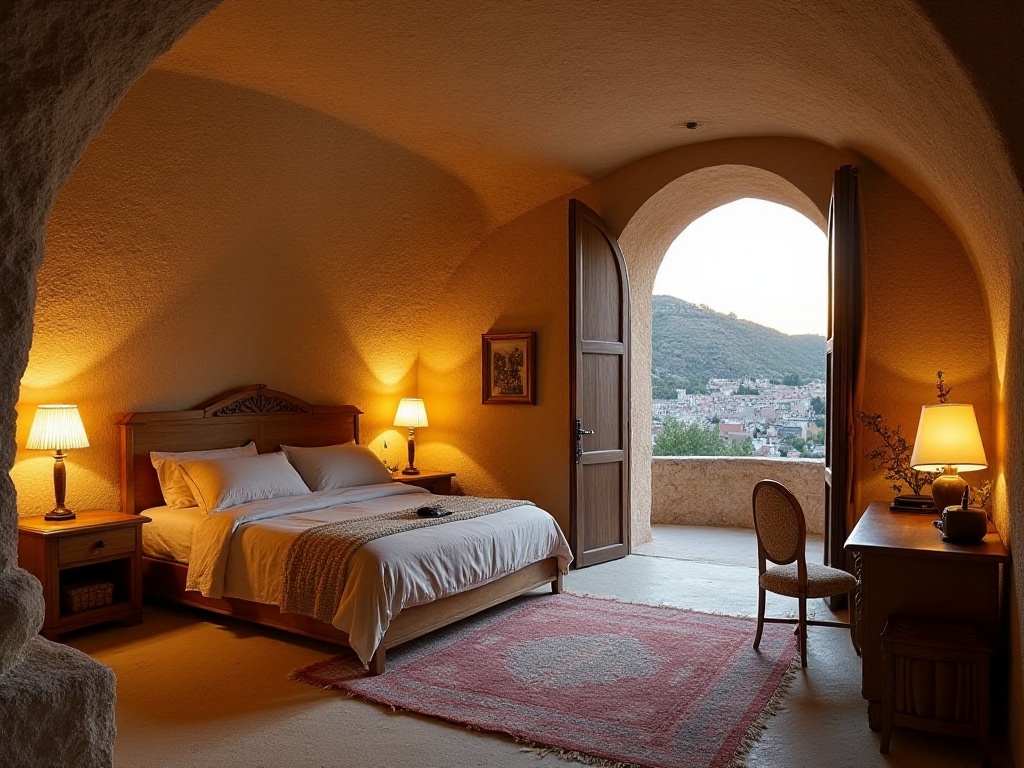
Natural Beauty
Speaking of stunning accommodations, I must mention the Kennicott Glacier Lodge in Alaska. This is a family-run lodge that has operated for three generations, built right next to the glacier. Opening the window in the morning, you have a full view of the massive glacier and mountain ranges. The owner told me they have witnessed the glacier's retreat over the past 20 years firsthand. This made me deeply aware of the impacts of climate change.
The history of Kennicott Glacier Lodge can be traced back to the copper mining boom in the early last century. At that time, this was a busy mining district, but after copper resources were depleted, most residents moved away, with only a few families staying. Jack's family, the lodge owners, was one of them, converting old miners' dormitories into today's lodge.
Getting from Anchorage to Kennicott requires small aircraft and 4x4 vehicles. After the long journey to reach this almost isolated town, you're greeted by a row of red wooden buildings against a backdrop of majestic snow-capped mountains and azure glacier. The lodge itself preserves many original details - wooden floors slightly uneven from age, walls hung with old photos telling the town's history.
My room was on the second floor with a direct view of the magnificent Kennicott Glacier through the window. The first morning, I was awakened by sunlight, pulled back the curtains, and was stunned by the sight - the glacier gleaming in the sunlight, surrounding peaks covered in snow, and a few moose casually strolling in the distance. At that moment, I felt like the luckiest person in the world.
After breakfast, Jack led us along a path toward the glacier. Along the way, he pointed to the distance saying, "See that exposed rock? Ten years ago it was still covered by ice." When we reached the glacier's edge, he took out a photo album with pictures his grandfather had taken at the same spot. The glacier's retreat was very obvious in comparison. Jack said, "Our whole family has been recording the glacier's changes - it's become our mission." These words both moved and saddened me.
In the lodge's living room, there were lectures every evening about climate change and glacier preservation, given by local scientists and guides. Through these lectures, I not only learned about glacier formation and evolution but also recognized the far-reaching impact of human activities on the natural environment. Jack told me that part of their lodge's income is donated to local environmental organizations for glacier research and protection.
During my stay at Kennicott, I would spend several hours each day sitting on the lodge's terrace, quietly admiring the glacier's majesty. Sometimes the glacier would suddenly crack with a huge sound, its natural force inspiring awe. At night, in an environment free from light pollution, the stars seemed within reach, and occasionally we could see spectacular northern lights dancing in the sky.
On my last day before leaving, Jack took us deep inside the glacier to explore an ice cave. Standing among blue ice layers, listening to sounds inside the glacier, I felt nature's wonder and fragility. Jack said, "I hope my grandchildren can see such beautiful scenes too, but I'm not sure if that's possible." These words have stayed with me, strengthening my determination to support environmental protection.

Environmental Awareness
My experience at an eco-resort in the Dominican Republic completely changed my understanding of sustainable travel. The place runs entirely on solar power, and all daily items are carefully designed to minimize environmental impact. For example, they use local bamboo to make furniture, collect rainwater for daily use, and have an organic farm supplying daily ingredients. Staying there for a week taught me how to live a more environmentally friendly life.
This resort called "Eco Paraiso" is located on the Samana Peninsula in the Dominican Republic, far from busy tourist areas, surrounded by dense rainforest and pristine beaches. It was founded by an environmentalist couple from Germany who came here for their honeymoon twenty years ago, fell in love with the land, and decided to stay and build a truly ecological resort.
Upon arrival, I was attracted by its unique architectural style. All buildings use local sustainable materials, mainly bamboo, coconut trees, and recycled wood. Roofs are covered with palm leaves, walls are smoothed with natural mud and lime mixture, which is not only environmentally friendly but naturally regulates indoor temperature. My cabin was built in a tree, accessible by wooden stairs, with simple but comfortable interiors and all furniture handmade by local craftsmen.
Most impressive was the resort's energy system. Solar panels on every roof provide all electricity needs. At night, solar lamps light the paths, creating a dreamlike atmosphere. With abundant sunshine, they rarely worry about power shortage, but they also have several wind turbines as backup just in case.
Water resource management was also impressive. Each roof connects to a rainwater collection system, with filtered water used for showers, laundry, and irrigation. Toilets use a composting system, with waste converted to fertilizer for the farm. Showers use natural organic soap and shampoo, and all wastewater goes through a plant purification system before reuse.
The resort's restaurant serves food almost entirely from their organic farm or local fishermen. Every morning, I would follow the chef to pick vegetables and fruits needed for the day. They taught me how to identify plant ripeness and how to harvest without damaging plants. Lunch and dinner menus depended entirely on the day's harvest, each meal a surprise, both fresh and delicious.
Beyond facilities, resort activities all centered around environmental themes. I participated in organic farming workshops, learned composting, and even joined a beach cleanup. The owners regularly organized lectures sharing their environmental philosophy and practical experience. These activities not only enriched my vacation but made me deeply consider my lifestyle's environmental impact.
Most touching was the resort's close connection with the local community. They employ local residents, support environmental education projects in local schools, and help villagers develop their own sustainable small businesses. This way, tourism benefits directly reach the local community, creating a true win-win situation.
Leaving Eco Paraiso, I not only had a deeper understanding of eco-friendly living but took away many small tips to practice in daily life - like making natural cleaners, reducing water waste, and making wiser food choices. This accommodation experience went far beyond ordinary vacation - it changed my worldview and living habits. After returning home, I began paying more attention to reducing plastic use, trying to grow some vegetables, and becoming more aware of my consumption choices' environmental impact.

Deep Connections
The cave hotel in Matera is another unforgettable place. This ancient city in southern Italy has 9000 years of history, with the entire city built in limestone caves. My hotel, Locanda di San Martino, was converted from real ancient caves. All 40 rooms preserve their original stone structure - walking inside feels like traveling back to medieval times. At night, I often sat on the terrace outside my cave room, watching warm lights come on across the ancient city, feeling the weight of history.
Matera was once one of Italy's poorest regions - until the 1950s, locals still lived in these caves called "Sassi" under extremely harsh conditions lacking basic sanitation. In 1952, the Italian government forcibly relocated all residents, and these caves were abandoned for years. However, in the 1990s, some visionary entrepreneurs and artists began rediscovering the area's value, gradually converting these caves into boutique hotels, restaurants, and art spaces. In 2019, Matera was named European Capital of Culture, completely transforming from its impoverished past.
My hotel, Locanda di San Martino, exemplifies this transformation. My room was once a poor family's dwelling, now cleverly converted into a luxury suite while preserving original structures and features. The arched ceiling, irregular stone walls, and deep niches all tell this space's ancient history. Designers skillfully integrated modern facilities while respecting original structures - bathrooms hidden behind stone, specially designed lighting creating warm mysterious ambiance, every detail showing respect for history while pursuing modern comfort.
The hotel owner Gabriele is a Matera native whose grandfather once lived in these caves. He showed me a small museum inside the hotel displaying tools and furniture used by former residents, along with precious historical photos. Through these artifacts, I learned about locals' former way of life - how they survived in caves, solved water issues, and lived with animals. Gabriele shared his family's story - his grandfather's pain of forced relocation, and how he decided to return and rebuild this place. He said, "We can't forget history, even if it's painful. These caves carry our memories and identity."
The hotel restaurant serves traditional Basilicata regional cuisine, all ingredients from local small farms. At dinner, I tried rich bean soup, handmade pasta, and roasted lamb - each dish with its own story. The chef is Gabriele's aunt, who taught me how to make traditional ear-shaped "orecchiette" pasta with local flour. Through food, I glimpsed the region's historical changes and cultural resilience.
During my stay, I had coffee on the terrace each morning, watching morning light fall on the ancient stone city. During the day, I explored the entire Sassi district along narrow stone stairs, visiting rock churches, ancient cisterns, and traditional workshops. In the evening, I would find a terrace with good views to watch the sunset turn the whole city golden, gradually replaced by thousands of lights.
Most memorable was one evening when Gabriele invited me and several guests to a special event - dining in a fully restored traditional cave dwelling. This cave preserved its early 20th century original state, where a family lived in the same space with livestock, with only simple furniture and tools. There, an elderly woman cooked us a traditional dinner and sang old folk songs in local dialect. Though I couldn't understand the lyrics, the melancholy yet powerful melody deeply moved me.
Leaving Matera, I felt I hadn't just stayed at a hotel for a few nights but had experienced a journey through time and space. Those ancient stone walls, warm lights, and local stories had become part of my life. This deep connection went far beyond ordinary travel, helping me truly understand travel's meaning - not just seeing sights, but connecting with different histories, cultures, and people.

Selection Tips
After years of travel, I've developed several tips for choosing special accommodations. First, choose based on destination features - like eco-camps or treehouses in nature reserves, or boutique hotels converted from historic buildings in ancient cities. Second, do homework beforehand to understand the accommodation's philosophy and story. Finally, while budget matters, sometimes more expensive special accommodations can provide experiences worth far more than their cost.
Choosing special accommodations isn't random but requires careful thought. I usually first determine my travel theme and desired experiences, then seek accommodations matching these expectations. For example, if I want to deeply understand local culture, I prioritize family-run inns or small hotels operated by locals; if I want to be close to nature, eco-lodges in or near national parks and nature reserves are ideal choices.
Research is key. I often spend hours browsing travel blogs, forums, and social media looking for highly-rated but lesser-known accommodations. I especially focus on real user reviews and photos, not just official promotional materials. Sometimes, a casual comment or photo reveals an accommodation's true condition and unique charm.
Direct communication with accommodation owners is another strategy I often use. Through email or phone, I can not only get more information about the accommodation but also sense the owner's attitude and enthusiasm. Owners willing to patiently answer questions and share local knowledge usually provide more personalized service and experiences during your stay.
Timing is equally important. Many special accommodations sell out months or even a year in advance during peak season, so advance planning is necessary. On the other hand, some accommodations offer better prices and more private experiences during off-season. For example, I once booked a Tuscan castle at half price in winter, not only getting a discount but avoiding tourist crowds and receiving more attention from the castle owner.
Regarding budget, I suggest flexible allocation. In one trip, you can concentrate limited budget on one or two special accommodation experiences, choosing more economical options for other times. For example, during a two-week Japan trip, I arranged three nights at a traditional Japanese inn - though expensive, the experience of soaking in hot springs, wearing yukata, and enjoying kaiseki cuisine was absolutely worth it. The rest of the time, I stayed in clean, comfortable but affordable business hotels or guesthouses.
Special accommodations usually have limited rooms due to small scale, so try not to change plans after confirming bookings. If cancellation is necessary, notify early so owners can rearrange rooms. This shows respect for owners and helps build good relationships for future visits.
Finally, keeping an open mind is very important. Special accommodations may not offer standardized services and facilities you're used to in chain hotels, but these imperfections and differences create truly memorable experiences. Maybe the bathroom is smaller than expected, or breakfast times aren't flexible enough, but you might get unexpected surprises - like owner-baked bread or rare cultural exchange opportunities.
In most cases, special accommodations also require us to adjust our expectations and habits. For example, staying at an Italian countryside farmhouse might mean adapting to early rising; staying at an Amazon rainforest eco-lodge means accepting simple life without air conditioning and Wi-Fi. But these "inconveniences" let us temporarily leave our comfort zones and truly integrate into local life rhythms and cultural environments.

Future Outlook
As travel styles continue evolving, more people are seeking unique accommodation experiences. I believe more innovative accommodation forms will emerge in the future. Perhaps someday we can stay in underwater hotels or spend nights at space stations. However, regardless of form changes, good accommodation experiences will always depend on respecting local culture and protecting the environment.
The tourism industry is experiencing unprecedented changes, especially in accommodation. Technology development and people's pursuit of unique experiences are driving new accommodation models. I've already seen some exciting trends, like fully self-sufficient eco-capsule houses, art hotels converted from abandoned industrial buildings, and even mobile accommodations floating on the sea.
Technology will undoubtedly play a more important role in future accommodation experiences. Smart accommodation systems can automatically adjust lighting, temperature and music based on personal preferences; virtual reality technology can provide immersive historical or cultural experiences; automation systems can reduce manual operations and improve service efficiency.




